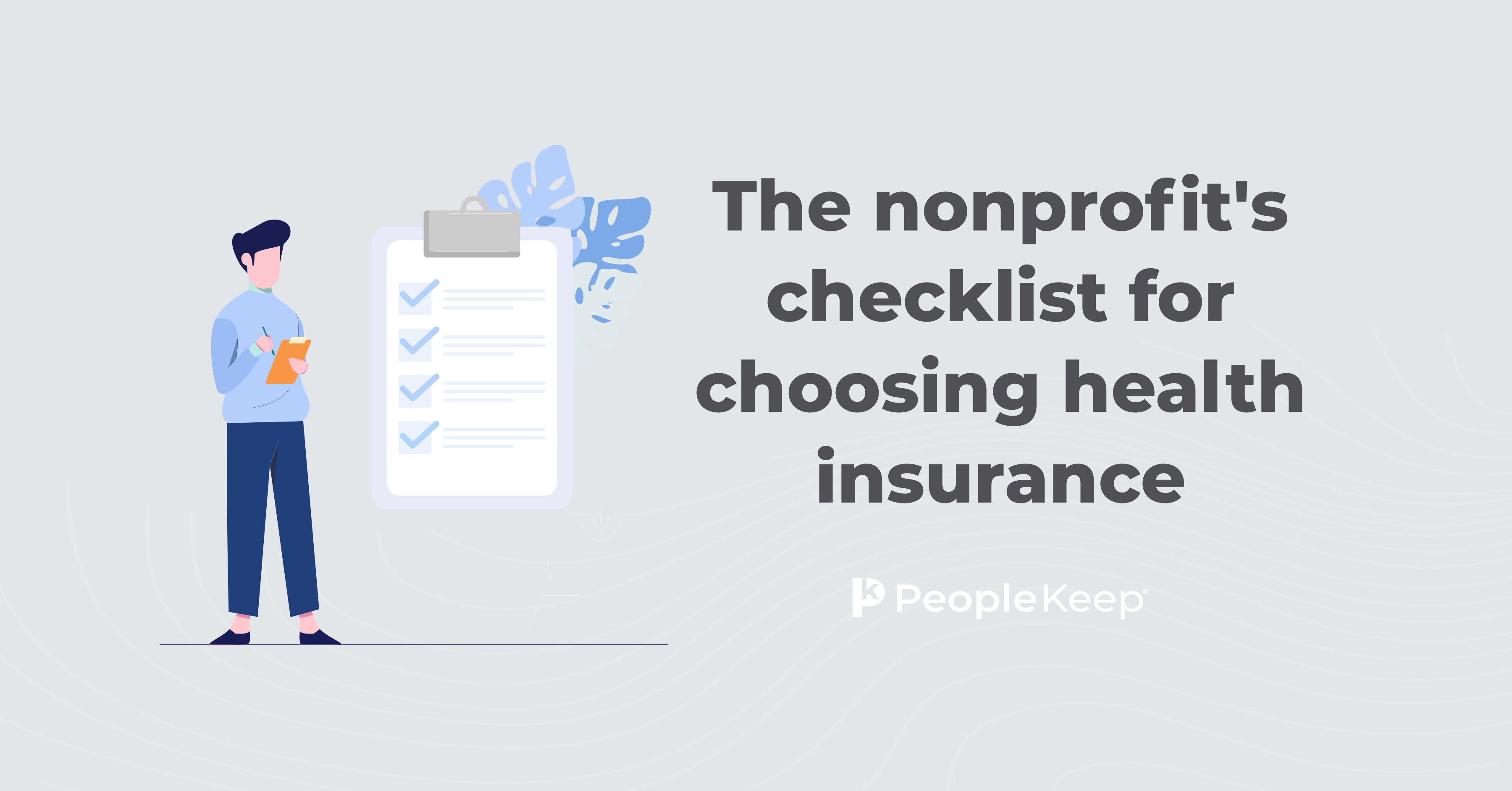Average HRA allowances by state
By Holly Bengfort on July 9, 2025 at 7:15 AM
As healthcare costs continue to rise, stand-alone health reimbursement arrangements (HRAs) offer a cost-effective alternative to traditional group health plans. These flexible, tax-advantaged health benefits allow employers to reimburse employees for their medical expenses, including individual health insurance premiums.
Determining the optimal allowance amount for an HRA requires careful consideration of various factors, such as your organization's budget and the needs of your workforce. Offering too little may lead to dissatisfaction and turnover, while offering too much could strain your company's resources.
In this article, we'll review average HRA allowances by state to give you an idea of what you should offer your employees.
In this blog post, you'll learn:
- What makes an HRA better than group health insurance.
- How you can help employees afford their own health insurance with an HRA.
- Average allowances offered by employers across various states.
What is an HRA allowance?
An HRA allowance is a monthly contribution of tax-free dollars that you offer your employees for their medical care and health coverage.
You can reimburse more than 200 qualified medical expenses, such as:
- Monthly premiums for dental, vision, and health insurance plans
- Emergency medical services
- Preventive medical services
- Over-the-counter medication
- Prescription drugs
How does an HRA work?
Health insurance is a highly sought-after benefit. According to our 2024 Employee Benefits Survey, 92% of employees consider health benefits important. The problem is how much it costs to offer a traditional group health plan, especially as a small or mid-sized business owner.
With an HRA, employers can help employees with the cost of their individual health coverage instead of buying a one-size-fits-all group health plan for the entire workforce. This can provide cost savings since individual health insurance premiums are often cheaper than group health insurance premiums. And, for those who self-funded their group plan, switching to an HRA eliminates the risk that comes with high employee claims.
Here's how an HRA works:
- You set a fixed dollar amount for your employees.
- Your employees pay for medical care and health insurance coverage using their own money.
- They submit proof of their eligible medical expenses for reimbursement.
- You approve their eligible expenses and reimburse them tax-free up to their allowance amount.
For example, if an employee purchases a health plan with a $200 health insurance premium and you offer them a $300 monthly allowance, you can reimburse them for their monthly premium along with $100 worth of other medical items or services.
On the other hand, if an employee chooses a health plan with a $350 monthly payment, you would only reimburse up to the $300 allowance you offer. The employee would have to cover the additional $50.
The stand-alone HRAs you can offer
Before you set your HRA allowance, you need to decide which HRA you want to offer your employees.
Individual coverage HRA (ICHRA)
The individual coverage HRA (ICHRA) is the most flexible HRA. It works for employers of all sizes, but it's especially advantageous to applicable large employers (ALEs) since it satisfies the Affordable Care Act's (ACA) employer mandate.
With no contribution limits, you can offer as much as you want as an allowance. You can also differ allowances by employee class. For example, you can offer your full-time employee class $300 while offering your part-time employees $150.
You can also differ allowances by employee age and family status. However, all of your employees need individual health insurance coverage to participate in the ICHRA. Additionally, employees participating in an ICHRA can’t collect premium tax credits (PTC) if the health benefit is affordable. If it’s unaffordable, they can opt out of the ICHRA and collect their premium tax credits. ALEs (those with 50 or more full-time equivalent employees) must offer an affordable allowance to avoid federal penalties.
Qualified small employer HRA (QSEHRA)
While the ICHRA works for employers of all sizes, the qualified small employer HRA (QSEHRA) is only for small employers with fewer than 50 full-time equivalent employees (FTEs). The Internal Revenue Service (IRS) also sets annual limits on employer contributions for the QSEHRA.
While you can't vary allowances by employee class, you can use an employee's age and family status. However, more of your employees may benefit from the QSEHRA since they don't need individual health insurance to participate, only minimum essential coverage (MEC). This means they can participate in the QSEHRA if they're covered through a spouse's or parent's traditional group health plan.
If you offer a QSEHRA that's affordable, your employees who receive premium tax credits can't claim them. But, if it isn't affordable, they can reduce their premium tax credit by the amount of the monthly QSEHRA allowance you offer.
Average HRA allowances by state
So, what are the average QSEHRA and ICHRA allowances by state? PeopleKeep and Remodel Health examined customer HRA data from 2024 to determine the average allowances in each state.
Utilizing data from our 2024 ICHRA Report (with Remodel Health) and our 2025 QSEHRA Report, we've compiled the average allowances for states where employers often adopt HRAs.
|
State |
Average ICHRA allowance |
Average QSEHRA allowance |
|
California |
$759 |
$370 |
|
Florida |
$674 |
$325 |
|
Texas |
$620 |
$331 |
|
Colorado |
$693 |
$343 |
|
North Carolina |
$518 |
$327 |
|
New York |
$998 |
$376 |
States that offer the largest and smallest ICHRA allowances
According to PeopleKeep and Remodel Health customer data, these are the states where employers offer the greatest ICHRA allowances on average.
|
State or district |
Average ICHRA allowance |
Average QSEHRA allowance |
|
District of Columbia |
$1,115 |
$416 |
|
New York |
$998 |
$376 |
|
Virginia |
$927 |
$344 |
|
Connecticut |
$912 |
$427 |
|
New Jersey |
$911 |
$356 |
Finally, these are the five states where employers offer the smallest ICHRA allowances on average.
|
State |
Average ICHRA allowance |
Average QSEHRA allowance |
|
Indiana |
$452 |
$330 |
|
Pennsylvania |
$440 |
$361 |
|
Kentucky |
$375 |
$385 |
|
Oregon |
$333 |
$352 |
|
Maryland |
$282 |
$334 |
Average HRA allowances by employer size
Ultimately, what you choose to offer your employees is up to you. Every situation is unique, just like every workforce. Based on our reports, these are the average HRA allowances by employer size. You can use them as a baseline when designing your own health benefit.
|
Employer size |
ICHRA allowance |
QSEHRA allowance |
|
Non-ALE |
$600 |
$431 |
|
ALE |
$448 |
N/A |
How PeopleKeep can help
If you're looking for guidance, trust the HRA experts. PeopleKeep by Remodel Health is here to help you out! Our HRA administration platform makes it easy for small and mid-size employers to offer health benefits in just minutes each month.
We take the stress out of offering an HRA by:
- Customizing your plan and allowances
- Reviewing employee reimbursement requests and documentation for you
- Handling compliance concerns
- Generating legal plan documents
- Providing award-winning customer support
Additionally, your employees can easily shop for individual health insurance coverage directly through their PeopleKeep accounts. There's no need for them to go to an insurance company or struggle with the Health Insurance Marketplace on their own. Our seamless shopping experience simplifies the process, helping them find health insurance policies that suit their needs perfectly.
For ALEs needing more compliance support and white-glove service, Remodel Health’s ICHRA+ solution is here to help. Remodel Health’s platform and concierge-style service combine to create the industry's most complete service model.
Conclusion
Group health insurance is expensive. Switching from a group health benefit to an HRA is the best choice for your budget. But it's also important to set the right allowance for your HRA to ensure it meets the needs of your employees.
This blog article was originally published on March 15, 2017. It was last updated on July 9, 2025.
Check out more resources
See these related articles

The nonprofit’s checklist for choosing health insurance
Are you a nonprofit organization in need of health insurance? Look no further! Our checklist offers guidance on choosing the best plan for your needs.

QSEHRA rules you need to know
Stay compliant with QSEHRA rules by familiarizing yourself with the requirements in this beginner-friendly guide. Start simplifying your healthcare benefits.

5 steps to a successful QSEHRA launch
Ready to launch a QSEHRA plan for your employees? Follow these 5 simple steps for a successful implementation and ensure compliance!



